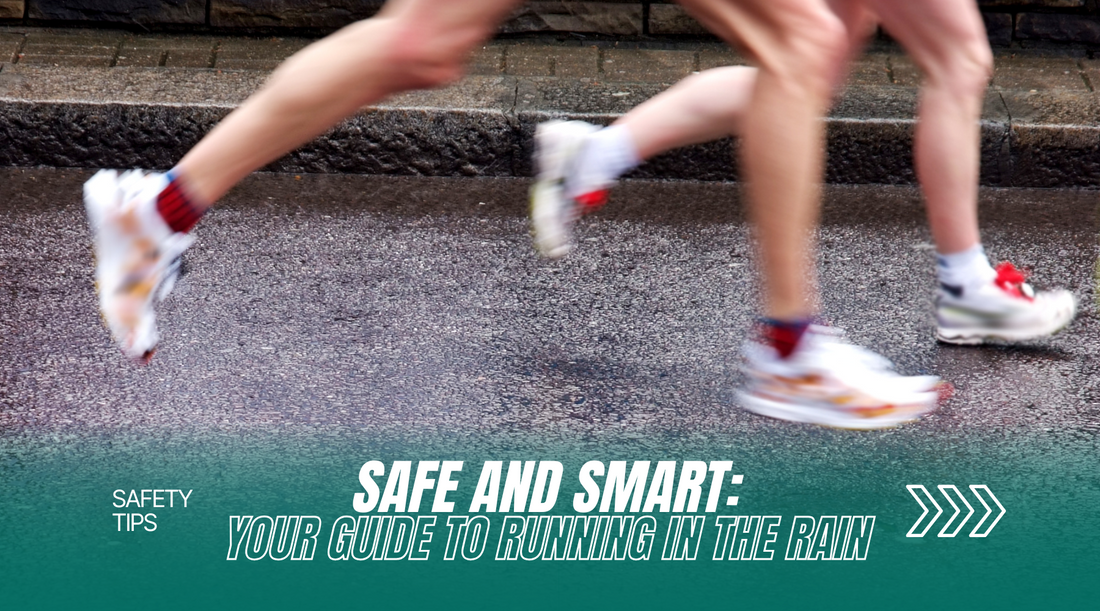
Safe and Smart: Your Guide to Running in the Rain
Share
A safety-first guide for rainy day running. Includes gear recommendations, route planning tips, injury prevention, visibility advice, and how to handle post-run recovery when you’re soaked.

Rainy days don’t have to sideline your training. In fact, running in the rain can feel refreshingly invigorating if you do it right. The key? Stay safe, stay visible, and take care of your body before, during, and after your run. Here’s your safety-first guide to rainy day running so you can lace up with confidence, no matter the forecast.
1. Gear Up for the Wet Weather
Good gear turns a soggy slog into a strong session. For running in the rain, focus on lightweight, water-resistant layers that won’t weigh you down.
-
Top layer: A breathable, waterproof jacket to keep your core warm without trapping heat.
-
Bottoms: Quick-dry leggings or shorts that won’t cling.
-
Shoes: Go for pairs with good traction—wet pavement can be sneaky.
-
Socks: Synthetic or merino wool to keep feet warm and reduce blisters.
-
Hat or visor: Keeps rain off your face so you can focus on the road ahead.
Pro tip: Skip heavy cotton—once it’s wet, it stays wet.
2. Choose Your Route Wisely
Route planning for rainy day running is all about minimizing risk.
-
Stick to well-lit, familiar paths where you can see potential hazards.
-
Avoid routes with deep puddles, slick metal surfaces, or heavy traffic.
-
If possible, choose trails or roads with good drainage to prevent slipping.
When in doubt, shorten your loop so you’re never too far from home or a dry shelter.
3. Prioritize Injury Prevention
Wet conditions change your stride and your body’s response. Protect yourself with a few extra steps:
-
Warm up indoors to loosen joints and muscles before stepping out into the cold.
- Shorten your stride slightly to maintain control on slick surfaces.
-
Engage your core—good posture keeps you balanced when footing is uncertain.
4. Make Yourself Visible
Overcast skies and rain can make you harder to spot. When running in the rain, visibility is as important as traction.
-
Wear bright or fluorescent colors.
-
Add reflective strips, vests, or LED lights to your gear.
-
Choose routes with good street lighting, especially if you’re running early or late.
Think of it as your rainy-day armor—see and be seen.
5. Post-Run Recovery When You’re Soaked
The moment you finish, your body will cool down fast. Don’t linger.
- Swap wet clothes for dry layers immediately.
- Wrap yourself in a towel or blanket to retain heat.
- Refuel with a warm drink and a balanced snack.
-
Stretch indoors to maintain flexibility and prevent stiffness.
Your recovery routine is just as important as the run itself—especially in wet, chilly weather.
Final Word: Rain is Just Water—Run Smart
Running in the rain isn’t about braving the storm; it’s about embracing it with preparation and awareness. With the right gear, a smart route, and proper post-run care, you can turn a gloomy forecast into one of your most rewarding runs yet.
So next time the clouds open up, don’t hide. Step outside, stay safe, and run smart.
